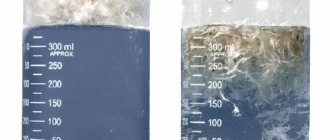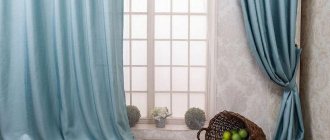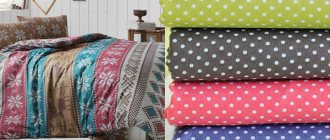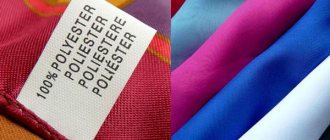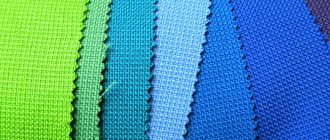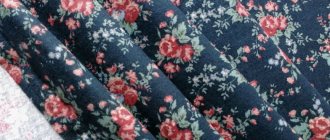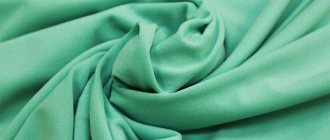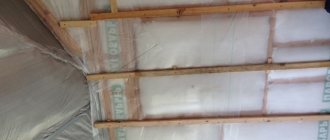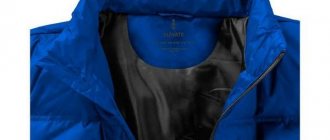We all know how good natural down jackets are, but the modern textile industry also produces artificial insulation materials that have excellent thermal insulation properties. Polyester filling in jackets: how many degrees can you wear it, what features does it have and how to care for it - today we will talk about this and more.
History and production now
Polyester was invented in the 30s of the 20th century in Great Britain. At that time, the technology for producing nonwoven materials was invented. Soon it began to be used in clothing as insulation. In Russia, fiber began to be produced by the end of the 40s, and filler - in the 60s.
Polyester - what kind of filler? Polyester fibers are made from petroleum products: terephthalic acid and ethylene glycol. A few decades ago, many mechanical and chemical processing steps were required. How PE filler is made now:
- preparation of raw materials - cleaning and loosening;
- formation of a fibrous base;
- joining fibers by mechanical, physico-chemical or temperature effects;
- finishing of finished insulation.
It is necessary to cleanse from impurities and by-products. They are harmful to human health.
Is polyester safe?
It is worth remembering that things made of polyester do not need to be worn very often. Although no one has proven its negative effect on the body, sometimes it is better not to take risks. Pregnant women are not recommended to wear items made entirely of polyester. It is worth making sure that at least the lining is made of natural fabrics. If there is none, then it is better to wear clothes made of polyester over things made of natural fabrics, for example, cotton.
Polyester - what kind of material? It is synthetic, previously sportswear was made from it, until it gained enormous popularity, and then many other things that people consume in everyday life began to be made from it.
Products made from this fabric do not cause allergic reactions on the skin and repel water. But there are also disadvantages. In the summer, clothes made of polyester will be too hot, and it is not very pleasant to the body, so it is better to wear something natural under such things.
Of course, no one will argue that 100% cotton will be more comfortable than synthetic fabric. Only this kind of cotton looks no better over time than a floor rag. Even after the first wash, the item loses its presentability, and over time it will stretch and sag.
Some argue that it is impossible to walk in polyester fabrics in the summer: you start to sweat, and in cold weather it does not warm - the sensations are not the most pleasant. It should also be noted that polyester emits an unpleasant odor upon contact with sweat. Whether it is warm in spring or autumn is difficult to answer unequivocally. It is also necessary to take into account the quality of the material from which the product itself is made. Because in some jackets you can “die” from overheating, while in others you can’t walk even 20 meters without freezing. There is no need to save when choosing things from these fabrics.
Where is it used?
Polyester filler is used in many areas:
- insulation of houses;
- car seat filling;
- insulation of sports items, outerwear;
- making quilted lining;
- the inside of pillows, blankets;
- filling soft toys, sides of cribs;
- production of thermal underwear, sleeping bags;
- making the insides of autumn and winter boots.
Various materials are made from polyester fibers. They are becoming more and more popular.
Lining fabric
Polyester lining material is used for the following products:
- trousers, dresses, skirts, suits;
- jackets, jackets, coats;
- winter jackets and overalls.
The polyester lining does not wrinkle or stretch, and remains in its original form for a long time. It does not allow moisture and heat to pass through. Winter polyester lining fabrics are supplemented with thermal protection.
Read about: fibertek insulation
Types of PE fiber insulation
Products under the ShelterEcoStroy brand of the Ves Mir factory are made from PE threads by heating with air. Construction insulation is not afraid of moisture, heat and frost, and retains its elasticity, shape and low thermal conductivity in any conditions. The material is hygienic and durable; the addition of fire retardants reduces the risk of fire.
- Isosoft insulation: what it is, advantages and disadvantages
It is easy to install and does not create discomfort for installers when cutting and installing. The insulation is effective on any part of the building: roof, walls, floor. Good vapor permeability allows use for wooden houses. Installation of the material is carried out on the lathing; it is similar to laying mineral wool, but does not require waterproofing.
Polytex is a new material on the insulation market. The products are produced by recycling plastic containers. In appearance and properties they are similar to holofiber. Polytex has become popular in Europe due to its properties: environmental friendliness, low hygroscopicity and heat transfer, resistance to biological organisms. The service life of the insulation is up to 50 years, during which time it does not reduce its characteristics.
To achieve fire safety, fire retardant additives are included in the composition.
Politex mats have a low density and minimal weight; they do not load the structure, but are superior to mineral wool in terms of heat retention capabilities. The material is vapor permeable and does not absorb water; when wet, the moisture quickly disappears.
Sintepon is an insulation made of organic fibers with a thermal conductivity coefficient of 0.031 W/m*K. In many respects it is close to basalt wool, but is an environmentally friendly and hypoallergenic product. Installation of thermal insulation can be carried out without special protection. Synthetic winterizer does not change its characteristics when wet, but due to its high breathability it requires the installation of a membrane.
AltEcoBud is a non-woven fabric made of polyester fibers used for thermal insulation of buildings, clothing and other products. The insulation contains no formaldehyde compounds and is environmentally friendly. The material reliably protects from frost and heat, is characterized by low water absorption and dimensional stability.
Among the advantages of AltEcobud: tensile and compressive strength, reusability, long service life, resistance to mold, fungi and insects. The insulation is recommended for insulating floors, walls and ceilings made of any material: wood, brick, concrete. It is used as filler in frame structures.
Positive and negative qualities
Positive characteristics of the material:
- lightweight, retains heat at low temperatures;
- shape-stable, durable, wear-resistant;
- there are inexpensive types;
- even expensive or medium-priced items are cheaper than natural down ones;
- easy care, resistant to stains;
- does not deteriorate under the influence of inorganic acids and alkalis;
- not affected by insects, microorganisms, mold;
- universal – suitable for winter and demi-season items;
- many options retain heat better than natural down.
Disadvantages of polyester filling:
- accumulates static electricity (using an antistatic agent will solve the problem);
- the canvas is slightly stiff;
- cheap options cause allergies;
- the unquilted cheap types fall into clumps after five or six washes and stop heating;
- if you accidentally spill solvent, gasoline or acetone, the fibers will dissolve;
- most polyester fillers quickly absorb water and reduce thermal protection;
- Inexpensive materials do not allow air to pass through well.
To reduce the number of shortcomings and enjoy the positive aspects, when choosing a jacket you should carefully study the type of filling. If you can spend more, don't save.
Temperature characteristics - holofiber, isosoft, holophane, thermofin, thinsulate
Various types of insulation materials are made from pure polyester. Temperature characteristics of some of them:
- Holofiber. It has high wear resistance, therefore, does not lose its thermal insulation properties over time. Its heat retention characteristics are comparable to those of natural down. A winter jacket made using holofiber is suitable for temperatures down to -300C. Wind gusts up to 15 are also tolerated quite comfortably.
- Isosoft. Despite its small volume, it has excellent thermal insulation properties. This material is 3–4 times warmer than synthetic padding. It is soft and elastic, has increased wear resistance, good breathability, but at the same time is able to retain heat. Due to its characteristics, even a relatively thin layer of isosoft helps not to freeze at low temperatures. It is convenient that the use of this insulation is suitable for both winter and demi-season clothing. So, up to what temperature is it recommended to use isosoft of different densities:
- at 200-300 g/m2 – severe frosts down to -350C;
- at 100-150 g/m2 – mild winter down to -100C or cold months of spring and autumn;
- at 40-80 g/m2 - if not below 00C, it will be quite comfortable.
The heat-retaining properties of isosoft can be easily increased by adding an additional part. For example, it could be a fleece sweater. Thus, a demi-season jacket with isosoft can be used if it gets sharply cold, and you simply don’t have warmer outerwear with you.
- Hollophan. Products with holophane retain heat and “breathe”. The fabric is light and wear-resistant, does not absorb moisture, so it is comfortable in damp and snowy weather. For spring-autumn jackets, the density of holophane is 150 g/m2, for winter clothes - 250 g/m2.
- Thermofinn . It has excellent thermal insulation properties, is resistant to moisture, and is environmentally friendly. With an insulation density of only 100 g/m2, it will not be cold in temperatures of -150. 200 g/m2 cope with weather down to -300C. And two layers from 100 to 150 g/m2 provide frost resistance down to -450C.
- Thinsulate. Used for making warm clothes and shoes. It has the highest thermal insulation characteristics with low weight. Thinsulate is lighter than all existing analogues of polyester insulation, but at the same time more effective than natural fluff. This material is used to produce clothing that is resistant to frost down to -600C. In addition, the product does not lose its quality even in a humid environment. Previously, Thinsulate was not found in mass production. It was used only in narrow areas of activity, such as tailoring clothes for astronauts.
You may decide that polyester can withstand very low temperature conditions. However, to what minus the indicator can drop depends not only on the material used. The physical characteristics of a person are essential.
Summarize. Some people feel warm enough at -250C, but others, at the same temperature and wearing the same clothes, feel cold. Physical activity or a relaxed state is also important for thermal sensations. Pay attention to weather conditions, in addition to the thermometer readings: humidity, wind, sun.
What type of polyester insulation is used in jackets?
Many people associate synthetic padding with polyester filling. This name is not registered as a trademark, so various manufacturers produce it. There are many other types of polyester insulation with improved characteristics. Their names are registered and patented. These are holofiber, Thinsulate, Isosoft, Fellex and others.
Sintepon
There are two types:
- Old - from 2 or more layers of threads in one direction. Suitable for demi-season clothing at temperatures down to -5 degrees. The fibers are poorly connected, the product will wear out quickly. The filler rolls down and works its way out through the upper material.
- In the new padding polyester, the fibers are thermally connected. The material has a layer of air. Weighs less than the previous version and is more durable. Retains heat well.
After washing, even the new version loses half its thickness. Frequent washing reduces the elasticity and thermal conductivity of the material. Sintepon cannot be washed in a machine. Types of density - 100, 150, 200, 300 g/sq. m. Suitable for use at temperatures down to -25 degrees.
The structure of the threads is twisted, ensuring durability. Does not lose shape, dries quickly, weighs little. Does not allow air or water to pass through.
Sintepooh
Made to look like natural fluff. For this purpose, polyester fibers are glued together using a special method. Wear-resistant, does not wrinkle and dries quickly. Is synthetic fluff warm or not? For winter with a temperature of -25 degrees, an option with a density of 250 g/m is suitable. sq. At a temperature of 5 degrees, 60 g/m is sufficient. sq. There are two varieties, the first is homogeneous and more elastic.
Holofiber
The two outer parts of the web contain balls of fibers inside; they can be located perpendicular to the main parts. The properties of the material allow excess liquid to evaporate freely, while retaining heat. A person does not freeze, does not sweat.
Holofiber is approved for use in children's clothing. It does not cause allergies and is suitable for everyone. Its properties are similar to bird fluff. It can be easily washed in a machine on a delicate program. Density 70-300 g/sq.m. m. Recommended for weather from +5 to -30 degrees.
Isosoft
The polyester insulation in jackets from a Belgian company is in the form of balls between two fabrics. Easy to wash, dries quickly. Does not deform. Thin, the jacket does not look puffy. Sometimes 80-250 gr.
Hollophan
It consists of two canvases filled with material twisted in a spiral. Lightweight material that does not absorb water. A down jacket with such filling will always keep you warm and cozy.
These two materials are variants of holofiber, which are produced by different companies.
Thinsulate
What it is? Artificial down, the characteristics are no worse than natural. It was invented for space flights. Now the material is used as filler in overalls and winter suits for sailors, oil workers, and sleeping bags for climbers.
Depending on the density of the filler, products made from Thinsulate are suitable for temperatures from -30 to -60 degrees. It is used to make winter clothes for children.
The material is expensive. Its fibers are very thin, the products are light. Things allow air to pass through well. Very warm, keep the right temperature. It happens from 100 to 480 gr.
Fellex
Fellex polyester comes in different shapes: balls, spirals, solid layers. The layers of fibers are fused together at high temperatures. Density options: 120, 220, 250, 300 g.
The material is lighter than padding polyester, but warmer. The absence of an adhesive component prevents the insulation from rolling and deforming. It costs less than natural fillers and has no worse characteristics.
Fellex does not require special care and is suitable for children and adults. At low temperatures it warms well, the lining retains heat.
What else do you have
Other PE fillers:
- Thermofinn is made from 85% crimped fibers, the remaining 15% solid bicomponent. This raw material is placed inside the shell. Density options - 100, 150, 200 g/sq. m. Application temperature from -15 to -55.
- Fleece is a non-woven base with a fine pile. Typically used as a lining. Density 100-600 g/sq.m. m.
- Polartek is a type of fleece with the addition of 2-3 layers of protective coating against water and wind. The density is like regular fleece.
Fleeces are used both as lining and as separate clothing. Used on its own at +10. Polartek is suitable for -20 degrees.
Advantages and disadvantages of polyester insulation
Warm clothing made from polyester is durable and easy to care for.
The properties of polyester, its many advantages and some disadvantages are determined by the structure of the polyester fiber, the method of weaving the threads and various additives. Here is a list of the main positive qualities of insulation made from this material:
- Outerwear insulated with polyester can serve at air temperatures from -5 °C to -30 °C.
- Synthetic filler does not contribute to the emergence and development of pathogenic microflora, so things with polyester can be worn by people suffering from allergies.
- The unique formula of polyester fiber allows the product to retain its original shape for a long time. Things do not deform even after frequent washing.
- Clothes filled with polyester do not require special care. It is easily machine and hand washable.
- Coats and jackets filled with polyester fiber are lightweight. Both adults and children are comfortable in such clothes.
Speaking about the disadvantages of this material, the following should be noted:
- When heated to temperatures above +40 °C, the filler may become deformed.
- Cheap types of material fall off and form clumps after several washes.
- Clothes do not allow air to pass through well.
- Insulation is destroyed under the influence of gasoline, acetone, benzene and other aggressive chemicals.
When producing high-quality polyester filler, the thermal method is usually used to join the layers. However, in the production of some cheap varieties of this material, for example, padding polyester, gluing with special adhesives is acceptable. Such fillers are hazardous to health as they can cause allergic reactions. When choosing clothes with synthetic filling, you need to pay attention not only to the thickness of the lining, but also to the method of making the insulation.
What is the density of polyester insulation up to what temperature and for what weather?
A jacket with good insulation density will not be cold. The average density of winter clothes is 200-250 g. Material 350 g/sq. m. for what weather: for a very cold winter. At the same time, some types, due to special processing with low density, will warm at very low temperatures.
Is polyester insulation warm? It depends on the type of matter:
- Holofiber retains heat in the same way as natural down. It will keep things warm for winter at temperatures down to -30 degrees. You can safely withstand wind speeds of up to 15 m/s.
- Isosoft is several times warmer than synthetic winterizer. Polyester 300 g/m is suitable for weather -35 degrees. Density 100-150 g for late autumn or early spring, temperature up to -10. The 40-80 g option is suitable for zero temperatures.
- Hollofan with a density of 250 g. suitable for winter clothes. Demi-season ones are made with 150 g/sq.m. m.
- Thinsulate is used for sewing clothes and making shoes. It is the lightest of all types of polyester as clothing insulation. With a density of 480 gsm. m. jacket will warm you in frost -60. With increased humidity, the properties do not change. Thin options are used at +5 degrees.
- Thermofinn perfectly protects against the cold. Protects from cold at -15 with a density of 100 g. 200 g. will be enough for -30. Two layers of insulation from 100 to 150 g. will protect at -45 degrees.
How to choose 100% polyester insulation and for what weather? It depends on the individual characteristics of the organism. Some people wear a fall jacket all winter and don’t get sick. Others won't stay warm until they buy the warmest winter overalls.
100% polyester from various manufacturers
Thinsulate . This is one of the highest quality polyester insulation materials, almost as good as down in its capabilities.
A very light and thin material that has all the positive qualities of natural feathers, but is devoid of its disadvantages. It consists of microscopic fibers surrounded by an air layer. Clothing with this filling is thin, light, breathable, and very warm.
It washes well and doesn't lose its shape. Synthetics are used for making mountaineering overalls and sleeping bags, as well as for clothing for oil workers and polar explorers working in the harsh conditions of the north. Density from 480 g/m2 will provide comfort in severe frosts down to -60 degrees.
The spatial structure and its stability allow it to retain heat at very low temperatures. Even in clothes with a fairly thin layer of Thinsulate, you can safely go outside at a temperature of -30 °C. We are talking, among other things, about children's clothing.
To assess the level of quality of Thinsulate, it is enough to know that it is used in sewing overalls for oil workers, sailors, climbers and people in other extreme professions. But overalls and jackets with such insulation are quite expensive.
Hollofiber is a non-woven fiber in the form of balls or spirals, also found in the form of a slab. Manufactured by sintering under high temperature. It has powerful thermal conductivity, low cost, and restores its shape after strong compression. For a warm autumn, a density of 70 g/m2 is suitable, for a cold autumn - 150, for frost down to -30 degrees - 300 g. per m2. Derivatives of holofiber are holofane, fibertek, thermofil, etc.
In what weather should I wear a jacket with 100% polyester insulation from the above brands? You can feel quite comfortable and safe at temperatures down to -25 °C. At the same time, the cost of clothing as insulation is relatively low.
Regular polyester. It is often difficult to determine the manufacturer, as well as the characteristics of the material. If there are such doubts, it is not recommended to go outside in clothes with such “fluff” at temperatures below -10 °C.
Sintepon is a material in which the fibers are not glued together - they hold onto each other using silicone needles. It has a low cost and is used for sewing a variety of jackets and other products. Frequent washing leads to loss of initial elasticity, reducing thermal conductivity. It can have a density from 50 to 600 g/m2.
Manufacturers often use several layers of synthetic padding to ensure the required density. Filling 250 g/m2 is suitable for a demi-season coat designed for temperatures down to -5. Winter jackets at a frost of -25 are filled with padding polyester with a density of at least 350 grams. There are several improved modifications that have good durability (U-two, Freudenberg).
Synthetic fluff is a fiber produced in a special way that allows its particles not to stick together, successfully imitating natural fluff. It has high wear resistance, dries quickly and does not wrinkle. Synthetic down with a density of 250 g/m2 can withstand frost down to -25; for light spring jackets designed for +5, 60 g/m2 is enough.
Isosoft (isosoft) —
Branded insulation in which fibers in the form of balls are sealed between two surfaces. Manufactured by Libeltex. The design does not let cold air into the clothes and reliably retains heat. Easy to wash, dries quickly, does not lose shape. Thin enough, does not make the down jacket bulky. In combination with a membrane, it can withstand low temperatures down to -30 at a density of 200 g. per m2.
Synthetic or natural materials
There can be no question which is better - polyester or synthetic winterizer. It is the same. But padding polyester is considered the cheapest type of polyester and retains heat worse than other material options. This means that you should choose it only when there is no opportunity to buy something better. For example, during warm winters, for demi-season wear or for working outside.
What is better to choose, polyester or down:
- Natural down warms better than many types of polyester. But there are synthetic options with the same characteristics or better. For the northern winter, you should choose Thinsulate.
- Down absorbs any moisture and takes a long time to dry. Due to its naturalness, it is a breeding ground for microbes and insects.
- Synthetic material is easier to care for. A down jacket requires special care. To avoid freezing in it after washing, you will have to beat it with your hands.
Polyester fillers vary in cost. It's easier to find something that fits your budget. Down products cost about the same and are not cheap.
Types of materials and their main characteristics
Here we present the most popular filling options with their main characteristics: density and thickness of 100% polyester insulation, for what weather (temperature).
- Sintepon. The method of bonding fibers is chemical or physical. Density 100, 150, 200 g. and 300 g/m2. Thickness from 0.7 to 4 cm. Minimum comfortable temperature - up to -20 C°.
- Synthetic fluff. The fibers are spiral-shaped, elastic and elastic. 1st grade and 2nd grade, 1 is more elastic and uniform. Temperature from +5 to -30 C°. Sold by weight.
- Holofiber. Types Volumetric, Soft (with calender), Ecosoft. It is manufactured in the form of layers of different thicknesses, light and flexible. Density from 70 to 300 g/m2. Temperature from +5 to -30 C°. Here, by the way, for those who were interested in the topic “holofiber or polyester, which is better”: as you can see, it’s the same thing.
- Thinsulate. Polyester fibers are thinner (up to 10 times) than in other insulation materials, are siliconized and twisted into spirals. Density from 101 to 420 g/m2, thickness from 0.8 to 1 cm. Depending on the type, from +5 to -30, extremely up to -60 C°.
- Isosoft. The finest polyester fiber, comparable in quality to Thinsulate. The canvas is covered on both sides with a calender (polymer coating). Density from 80 to 250 g/m2, thickness from 0.7 to 2.2 cm. From +5 to -25 C°.
- Thermofinn is a polyester filler, what is it: a mass of hollow crimped and solid bicomponent fibers, the fabric is enclosed in a calender. Density 100, 150 and 200 g/m2, thickness - from 1.2 to 2.7 cm. From -15 to -55 C°.
- Polartek. Thin pile on a non-woven basis, with one to three layers of protective coating. It has moisture and windproof properties. From -10 to -15 C°, with high human activity - up to -20.
- Fleece. Thin pile on a non-woven basis, without coatings. Can be used as a lining, with a density from 100 to 600 g/m2. Without a second layer of clothing – up to +10 C°.
Don’t forget that how warm 100% polyester will be for you—what minimum temperature it is suitable for—depends not only on how cold the air “outside” is. Your activity level matters a lot. It is always warmer when you walk quickly, but if you stand in one place, you can freeze even at 0 C°.
Rules of care
Care tips for washing and drying:
- We recommend hand washing or an appropriate washing machine cycle. A delicate program will do.
- The water temperature is not higher than 40 degrees. Spin speed up to 800.
- Be sure to use conditioner. Heavily soiled items are treated with stain remover and soaked before washing. Do not use chemical bleaches.
- Dry in a room with good ventilation. The product should not be hung in direct sunlight. Clothes are hung on hangers away from heating devices.
- Iron in case of urgent need, at minimum temperature, through a piece of dry cloth. Use the steamer with caution if the instructions on the label allow it.
Polyester fibers should not be exposed to high temperatures or boiling. This spoils the structure of the fabric and changes the shape of the item.
Is a jacket with polyester filling warm in winter? Yes, if you choose a quality item and care for it correctly. The product will keep you warm for several more seasons.
Reviews about polyester insulation
Elena, 47 years old, Novosibirsk: as a child she wore a jacket with padding polyester. A huge thing that is uncomfortable to move in and not always warm. Now I buy it with holofiber and feel great.
Anna, 23 years old, Moscow: I love extreme recreation, I bought a winter suit made of Thinsulate a year ago. Nothing has ever been so warm!
Sergey, 31 years old, Vladivostok: I won’t say that holofiber or isosoft are bad, but I prefer to use natural materials as much as possible, like the filling in a down jacket.
Vladimir, 40 years old, Samara: I’m not particularly cold, I usually buy an inexpensive jacket with padding polyester. I'm ok.
© 2021 textiletrend.ru
